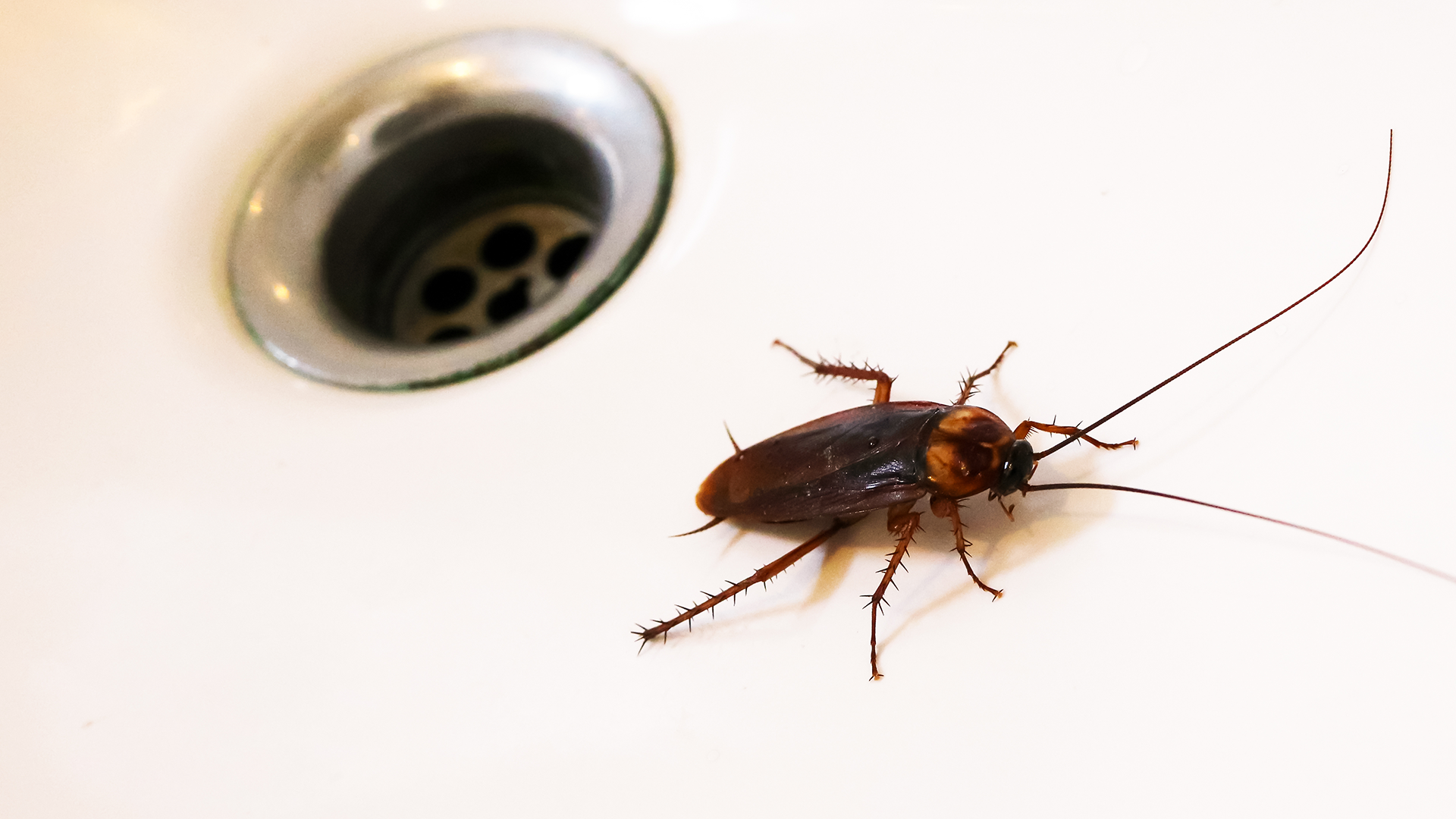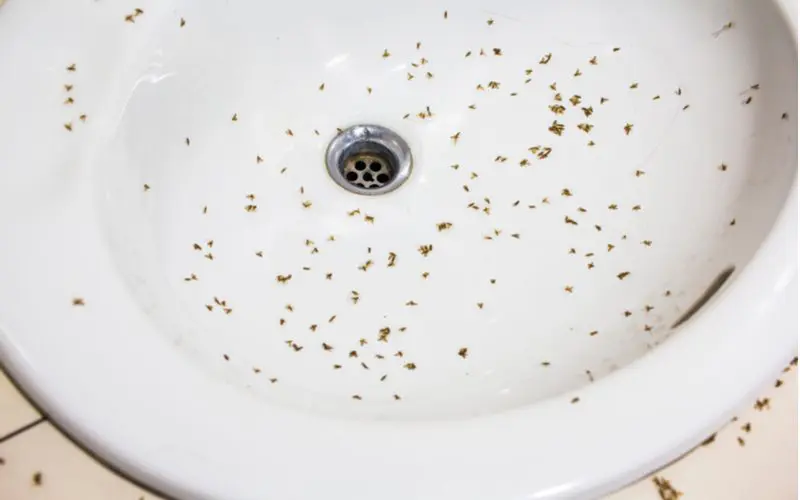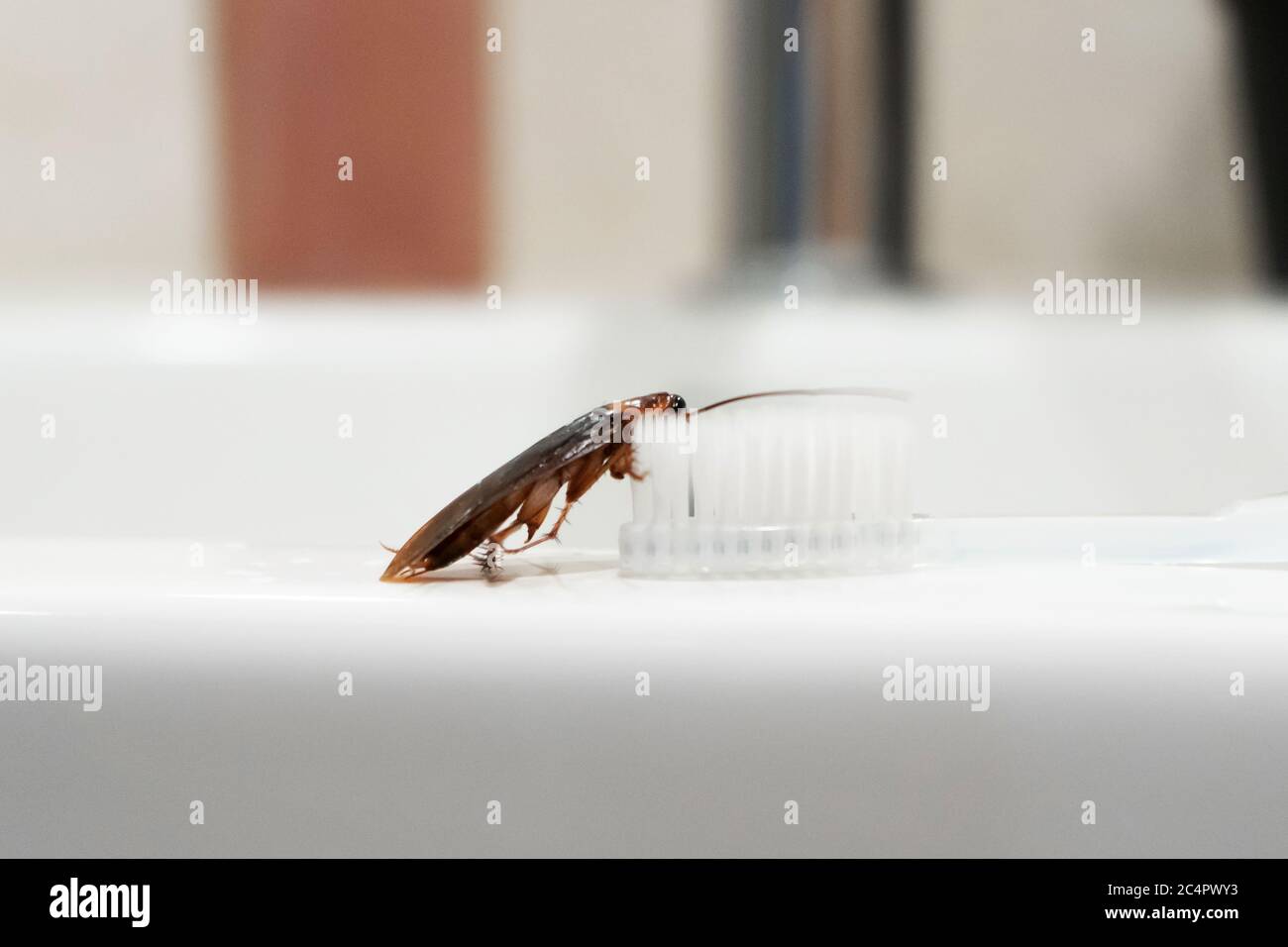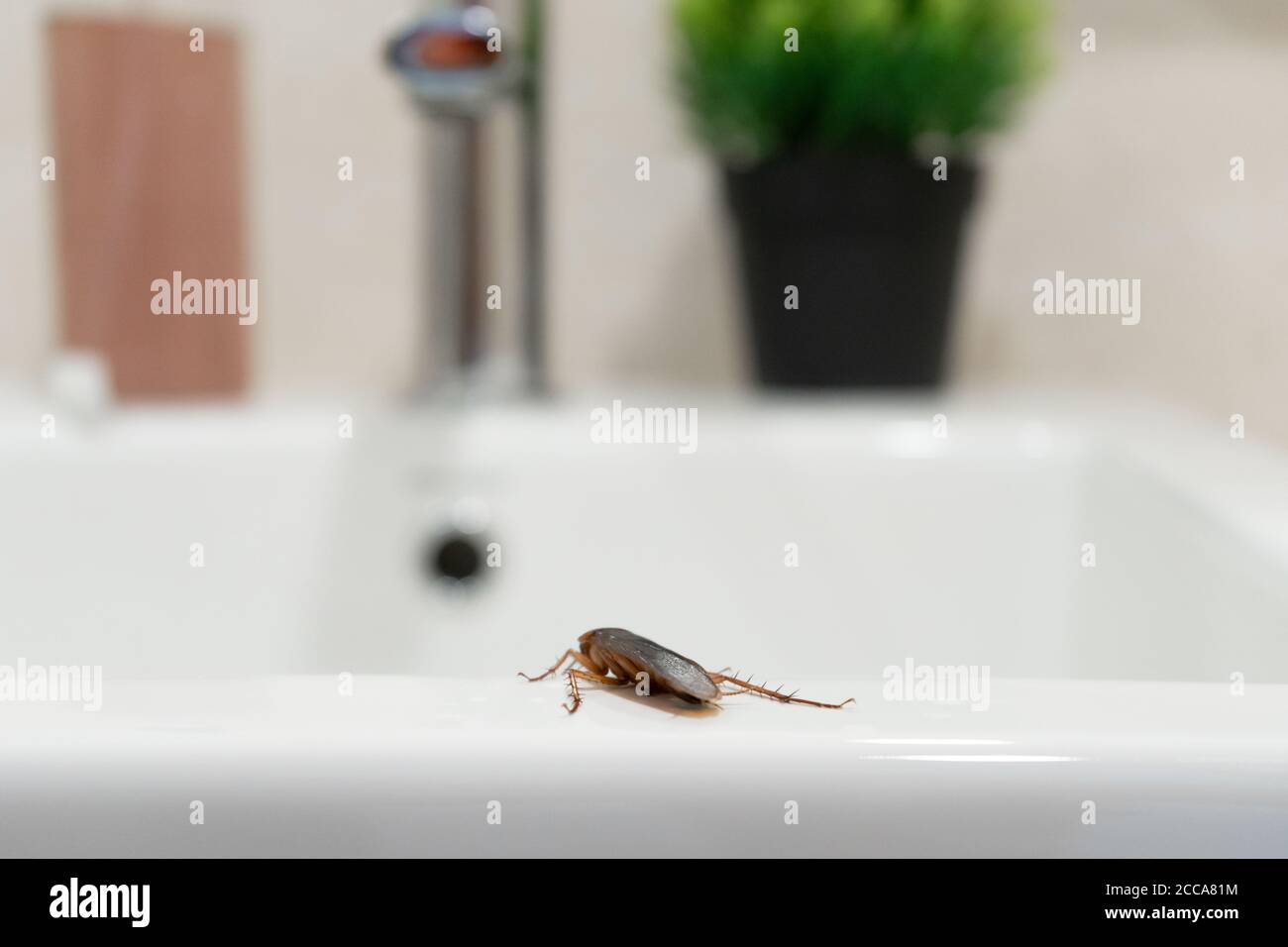If you've noticed some tiny bugs scurrying around your bathroom sink, you're not alone. Small insects in bathroom sinks are a common household pest, and they can be quite a nuisance. In this article, we'll take a closer look at the top 10 small insects found in bathroom sinks and how to get rid of them.Small Insects in Bathroom Sink
Before we dive into the different types of small insects that can infest your bathroom sink, it's important to know how to get rid of them. The first step is to identify the type of insect you're dealing with. Once you know what you're up against, you can choose the best method for extermination.How to Get Rid of Small Insects in Bathroom Sink
There are several types of small insects that are commonly found in bathroom sinks. These include drain flies, gnats, ants, cockroaches, and silverfish. Drain flies are small, moth-like insects that are attracted to damp areas and decaying organic matter. Gnats, also known as fruit flies, are attracted to moist areas and can reproduce quickly. Ants are drawn to food and water sources, making your bathroom sink an ideal spot for them. Cockroaches are a common household pest that can also be found in bathroom sinks. Lastly, silverfish are small, silver-colored insects that are often found in damp areas.Common Small Insects Found in Bathroom Sink
If you prefer to use natural methods for pest control, there are a few options for getting rid of small insects in your bathroom sink. For drain flies, try pouring a mixture of baking soda and vinegar down the drain, followed by boiling water. This will help break down any organic matter that may be attracting the flies. For gnats, you can use a mixture of apple cider vinegar and dish soap to create a trap. Simply place the mixture in a small dish and cover it with plastic wrap, poking a few holes in the top. The gnats will be attracted to the smell and get trapped inside. For ants, try sprinkling some diatomaceous earth around the sink to create a barrier. This powder is non-toxic to humans and pets but is deadly to insects. For cockroaches, try mixing equal parts baking soda and sugar and placing it near the sink. The sugar will attract the roaches, and the baking soda will kill them. For silverfish, try placing a damp newspaper or paper towel near the sink. The silverfish will be attracted to the moisture and get trapped on the paper.Natural Remedies for Small Insects in Bathroom Sink
The best way to deal with small insects in your bathroom sink is to prevent them from infesting in the first place. This can be done by keeping your sink clean and dry. Wipe down the sink and surrounding areas regularly and fix any leaky faucets or pipes. Also, make sure to dispose of any food scraps properly, and don't leave any standing water in the sink.Preventing Small Insects in Bathroom Sink
As mentioned earlier, it's important to identify the type of insect you're dealing with before attempting to get rid of them. This can be done by observing their appearance, behavior, and where they are commonly found. Drain flies have a fuzzy appearance and are often seen flying around drains. Gnats are small, dark-colored flies that are seen flying around moist areas. Ants are small, black or brown insects that are often seen in a trail leading to a food or water source. Cockroaches are larger, brown insects that are fast-moving and often found in dark, damp areas. Silverfish have a silver, teardrop-shaped body and are often found in damp areas and in paper or cardboard materials.Identifying Small Insects in Bathroom Sink
If you notice a small number of insects in your bathroom sink, it's likely not a cause for concern. However, if you start to see a large number of insects or notice an infestation, it's important to take action. Small insects can multiply quickly, and an infestation can become a health hazard and cause damage to your plumbing.Small Insects in Bathroom Sink Infestation
If you choose to tackle the problem on your own, there are a few DIY solutions you can try. In addition to the natural remedies mentioned earlier, you can also try using a commercial insecticide or setting out traps specifically designed for the type of insect you're dealing with. Just make sure to follow the instructions carefully and keep the area well-ventilated.DIY Solutions for Small Insects in Bathroom Sink
To prevent small insects from infesting your bathroom sink in the future, there are a few simple tips to keep in mind. First, make sure to wipe down the sink and surrounding areas regularly and fix any leaks or drips. Also, avoid leaving any food scraps in the sink or on the counter. Lastly, consider installing a drain cover to prevent insects from entering through the drain.Small Insects in Bathroom Sink Prevention Tips
If you're dealing with a severe infestation or prefer to leave it to the professionals, consider hiring a pest control company to handle the problem. They have the knowledge, experience, and proper equipment to safely and effectively exterminate small insects in your bathroom sink.Professional Extermination for Small Insects in Bathroom Sink
The Importance of Proper Drainage in Bathroom Design

Bugs in Sink Drains: A Common Issue
 When it comes to designing a bathroom, there are many elements that need to be carefully considered. From choosing the right fixtures and finishes to ensuring proper ventilation, the design process can be overwhelming. However, one crucial aspect that is often overlooked is the drainage system. A poorly designed drainage system can lead to a host of issues, including small insects in the bathroom sink.
Many homeowners have experienced the frustration of finding tiny bugs in their sinks. These insects, commonly known as drain flies or gnats, are attracted to moist environments and can often be found in stagnant water. In bathrooms, they can be found in sink drains, shower drains, and even around leaky faucets. Not only are these pests annoying, but they can also be a sign of bigger issues with the bathroom's drainage system.
Proper Drainage: The Key to Preventing Bugs in Sink Drains
The key to preventing small insects in bathroom sinks is to ensure proper drainage in the design of the bathroom. This includes choosing the right type of sink and installing it correctly.
Pedestal sinks
, for example, are a popular choice for bathrooms as they do not have any cabinets or countertops around them, providing easier access for cleaning and preventing moisture buildup.
Wall-mounted sinks
are also a good option as they have a gap between the sink and the wall, allowing for better ventilation and preventing moisture buildup.
In addition to choosing the right sink, proper installation is crucial in preventing drainage issues. All pipes and fixtures should be tightly sealed to prevent leaks, which can lead to standing water and attract bugs. Regular maintenance, such as using drain cleaners or calling a professional plumber to clear clogs, can also help prevent issues with the drainage system.
Designing for Function and Aesthetics
While proper drainage is essential, it doesn't mean that the bathroom design has to suffer. In fact, incorporating the drainage system into the overall design can add functionality and aesthetics to the space. For example, incorporating a
linear drain
in the shower can not only improve drainage, but it can also create a sleek and modern look.
Freestanding tubs
can also be a stunning addition to a bathroom, and their design allows for easy access to clean underneath and prevent any buildup of moisture and bugs.
In conclusion, small insects in the bathroom sink can be a common issue, but it can also be easily prevented with proper drainage in the design process. By choosing the right sink, ensuring proper installation, and incorporating functional and aesthetic elements, homeowners can enjoy a bug-free and beautiful bathroom. So, the next time you're designing a bathroom, don't forget about the importance of proper drainage.
When it comes to designing a bathroom, there are many elements that need to be carefully considered. From choosing the right fixtures and finishes to ensuring proper ventilation, the design process can be overwhelming. However, one crucial aspect that is often overlooked is the drainage system. A poorly designed drainage system can lead to a host of issues, including small insects in the bathroom sink.
Many homeowners have experienced the frustration of finding tiny bugs in their sinks. These insects, commonly known as drain flies or gnats, are attracted to moist environments and can often be found in stagnant water. In bathrooms, they can be found in sink drains, shower drains, and even around leaky faucets. Not only are these pests annoying, but they can also be a sign of bigger issues with the bathroom's drainage system.
Proper Drainage: The Key to Preventing Bugs in Sink Drains
The key to preventing small insects in bathroom sinks is to ensure proper drainage in the design of the bathroom. This includes choosing the right type of sink and installing it correctly.
Pedestal sinks
, for example, are a popular choice for bathrooms as they do not have any cabinets or countertops around them, providing easier access for cleaning and preventing moisture buildup.
Wall-mounted sinks
are also a good option as they have a gap between the sink and the wall, allowing for better ventilation and preventing moisture buildup.
In addition to choosing the right sink, proper installation is crucial in preventing drainage issues. All pipes and fixtures should be tightly sealed to prevent leaks, which can lead to standing water and attract bugs. Regular maintenance, such as using drain cleaners or calling a professional plumber to clear clogs, can also help prevent issues with the drainage system.
Designing for Function and Aesthetics
While proper drainage is essential, it doesn't mean that the bathroom design has to suffer. In fact, incorporating the drainage system into the overall design can add functionality and aesthetics to the space. For example, incorporating a
linear drain
in the shower can not only improve drainage, but it can also create a sleek and modern look.
Freestanding tubs
can also be a stunning addition to a bathroom, and their design allows for easy access to clean underneath and prevent any buildup of moisture and bugs.
In conclusion, small insects in the bathroom sink can be a common issue, but it can also be easily prevented with proper drainage in the design process. By choosing the right sink, ensuring proper installation, and incorporating functional and aesthetic elements, homeowners can enjoy a bug-free and beautiful bathroom. So, the next time you're designing a bathroom, don't forget about the importance of proper drainage.












:max_bytes(150000):strip_icc()/natural-ways-get-rid-insects-your-home-4864214-v2-2041dbe12ebf4e6c849ad4342c07ae61.jpg)

